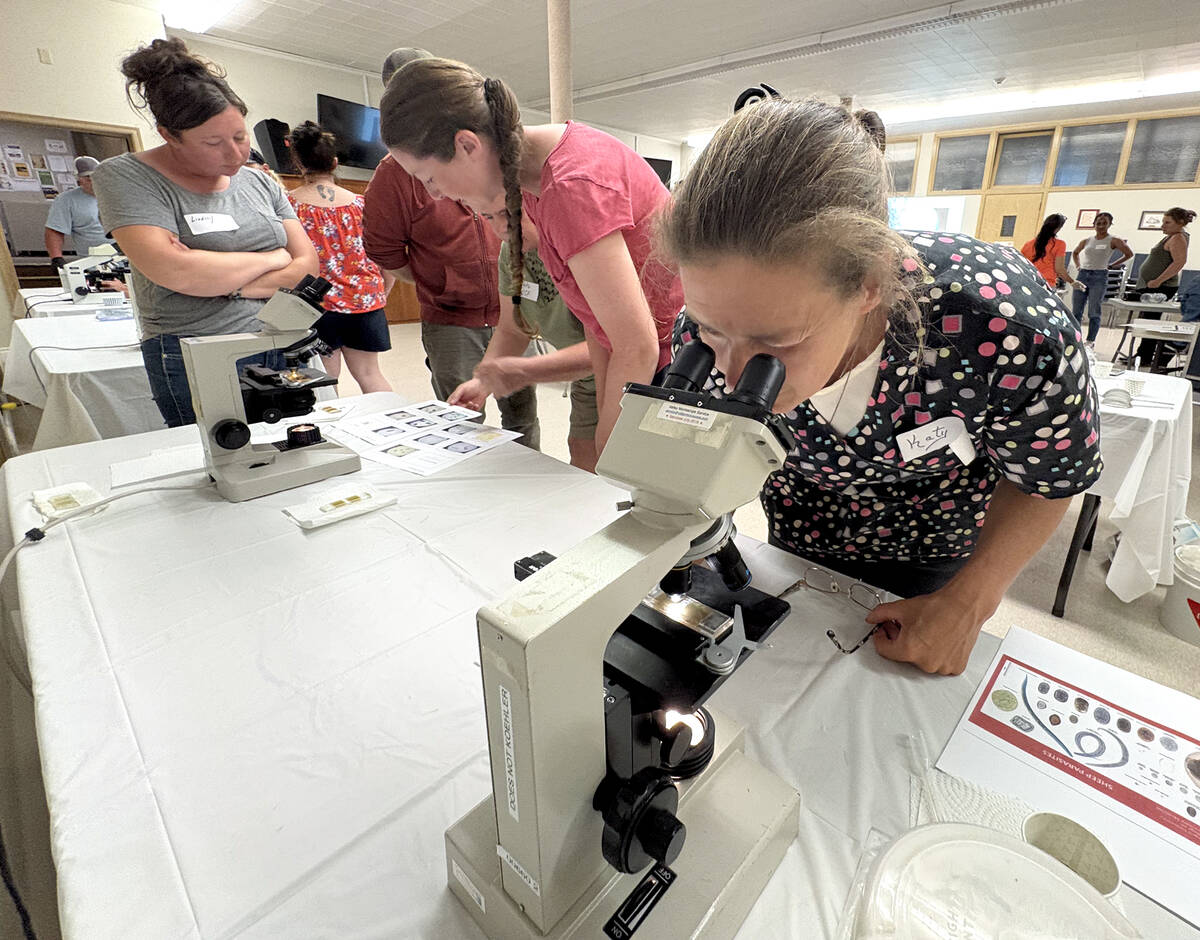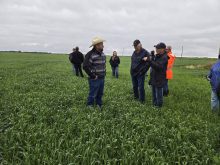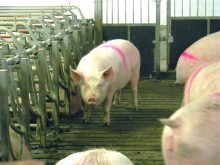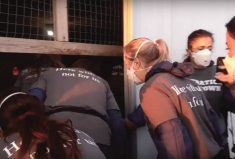bernie peet
Peet on Pigs
“The results showed that approximately 10-20 per cent of all hogs delivered had some form of a demerit valued at $0.60-$1.20/hog.”
Bernie Peet is president of Pork Chain Consulting Ltd. of Lacombe, Alberta, and editor of Western Hog Journal. His columns will run every second week in the Manitoba Co-operator.
Carcass demerits are rarely under the pig producer’s spotlight and yet they can represent a significant cost to both the producer and the processor, says Dr. Tony Nikkel, of Niverville-based Puratone Corporation.
Read Also

Smart deworming for sheep starts with individual fecal egg counts
Fecal egg count tests are one step to managing dewormer resistance and managing sheep parasites on Canadian sheep farms to maintain flock health.
Speaking at the Manitoba Swine Seminar held recently in Winnipeg, he said that demerits are often overshadowed by other product ion parameters such as average daily gain, feed conversion, mortality and carcass weight, despite the fact that attention to reducing demerits can improve carcass value significantly.
Demerits add cost at different levels, Nikkel says. “There is the direct cost of the trimmed parts of the carcass, which is deducted from the value of the hog. Also, the number of hogs in the core weight range may be reduced because carcass weight classes are determined after the carcass is trimmed and this will reduce the price paid.”
Nikkel points out that some packer programs reward producers with a bonus based on the percentage of hogs without demerits.
Some types of demerits may not have significant financial implications for the producer, but may be important to the processor. For example pleuritis, or lesions of the inner lining of the rib cage, requires the carcass to be pulled off the processing line onto the “held rail” where small amounts of tissue are trimmed off the inside of the rib.
“The held rail has capacity for a limited number of carcasses,” Nikkel explains. “When it is full, but there are additional hogs that require trimming, the entire processing line stops until space is available on the held rail. This is an expensive delay.”
Information from the processor, supplied in electronic form, can be analyzed using a spreadsheet to establish the reasons for demerits and allow investigation of the possible causes.
“In 2005 Puratone was challenged to reduce the number of hogs with demerits delivered to the plant, particularly the number of pigs with pleuritis, but also the number of hogs with abscesses and condemned heads or necks,” Nikkel says. Puratone launched an extensive investigation of all types of demerit, including analysis of which were most significant financially.
“The results showed that approximately 10-20 per cent of all hogs delivered had some form of a demerit valued at $0.60-$1.20/hog,” Nikkel says.
Of the hogs delivered with demerits, 80 per cent of the lost opportunity cost arose from market hogs that were being completely condemned. When examined further, it was discovered that 80 per cent of those hogs were being condemned due to transport-related issues such as being dead on arrival, identified as “subject” pigs on arrival and later euthanized or “dead in the pen” at the packer before slaughter.
“Since handling and transport were heavily incriminated, a separate team was created to investigate this issue,” he says. “This looked at on-farm facilities such as holding pens, alleyways and chute design, on-farm and on-truck prod use, trailer stocking density, ambient temperature at loading and scaling, farm-to-farm differences, in-transit delay times and unloading delays at the packer.”
REWARDING PERFORMANCE
Since condemned hogs were such a large percentage of the lost opportunity cost to the system, Puratone set up a reward program to encourage farms to reduce their incidence of condemned hogs.
“Feeder farms are ranked according to their percentage of condemned hogs and the top three farms with the lowest percentage of condemned hogs shipped are rewarded quarterly,” Nikkel says.
In addition to this analysis of condemnations, Puratone also made visits to the processing plant in order to assess possible health issues that could have been contributing to the three most important reasons for demerits.
“These investigations, in combination with comparative information regarding on-farm health status, led us to believe that the primary cause of the pleuritis adhesions was PRRS virus-related pneumonia in late nursery and early finishing,” Nikkel says.
“Completing a PRRS eradication program and analyzing the resulting changes in the incidence of pleuritis confirmed this suspicion and resulted in approximately $1/ hog savings due to reduced demerits.
“The majority of the absces ses being found at slaughter was associated with tail biting and the majority of condemned head or necks was being attributed to abscessed lymph nodes in the jowls of the pig’s head,” Nikkel says. “Work on the latter is not complete, however, it appears to be associated with general health status in the herd and the worse the health status, the more condemned head and necks there are.”
Ongoing tracking and monitoring of demerits in slaughter hogs also has other uses, Nikkel says. These include comparing different vaccine and medication strategies, looking at the impact of various diseases on demerits, making a better estimate of the financial costs associated with various diseases in addition to those incurred directly through higher mortality or slower growth. “It also allows the effect of various management strategies such as prod use or large pens versus small pens,” he says. “In addition, we are able to assess the impact of transportation crews, companies and drivers.”
Nikkel urges producers to use the data on demerits available from the processor, noting that analysis requires the ability to graph and chart the data in an Excel spreadsheet.
“I recommend that the farms’ herd veterinarian be used to best determine the causes of demerits and advise on intervention strategies because there are many potential causes of single types of demerits as well as many single diseases that can cause multiple different types of demerits.”


















